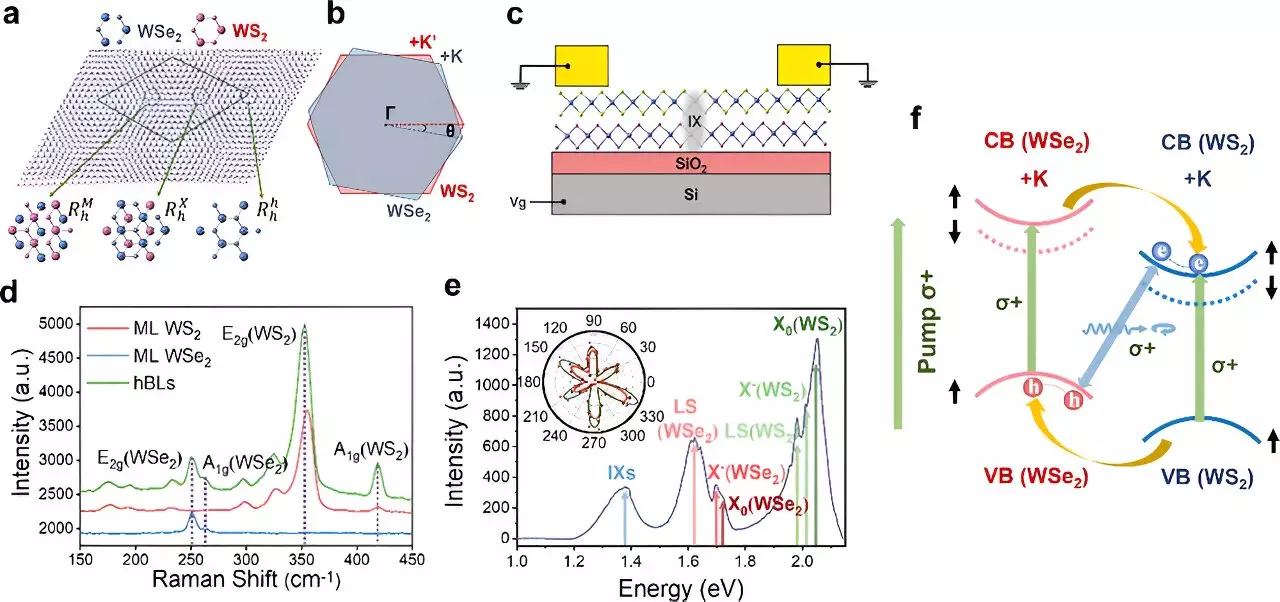In a recent study published in Science Advances, researchers Prof. Wang Can and Prof. Xu Xiulai have delved into the relationship between valley polarization switching and polarization degree in electrically controlled transition metal dichalcogenide heterobilayers (hBLs). This groundbreaking research highlights the importance of twist engineering in manipulating the valley degrees of freedom of interlayer excitons (IXs) in van der Waals (vdW) heterostructures.
Twist Engineering and Valley Polarization
The researchers have demonstrated that the valley polarization of IXs can be effectively controlled by adjusting the twist angle between different monolayers in the heterobilayers. By manipulating the moiré period through twist engineering, they were able to observe changes in both the degree of circular polarization (DCP) and the polarization switching in WSe2/WS2 heterostructure devices.
Through experimental studies, it was found that a larger moiré period resulting from a larger twist angle leads to a lower interlayer excitonic potential at local minima. This, in turn, causes the confinement of more excitons, resulting in enhanced DCP. On the other hand, an increase in intralayer electron-hole exchange interactions at a large angle leads to a decrease in intralayer valley lifetime and initial polarization, ultimately reducing interlayer valley polarization.
Theoretical Calculations and Future Implications
Theoretical calculations based on first-principle theory have further elucidated the relationship between twist angle, excitonic potential difference, and polarization switching. The researchers have shown that a higher external bias is required for devices with a larger twist angle to switch the polarization, highlighting the importance of twist engineering in controlling valley properties.
Building upon the findings of this study, the researchers have also demonstrated a valley-addressable encoding device that could pave the way for future non-volatile memories. This technology harnesses the twist engineering of moiré patterns in vdW heterostructures to create a platform for advanced optoelectronic applications.
The research conducted by Prof. Wang Can and Prof. Xu Xiulai sheds light on the intricate relationship between twist engineering, moiré patterns, and valley polarization in transition metal dichalcogenide heterobilayers. By unveiling the mechanisms behind polarization switching and DCP control, this study opens up new possibilities for the development of valleytronic devices and non-volatile memories.


Leave a Reply